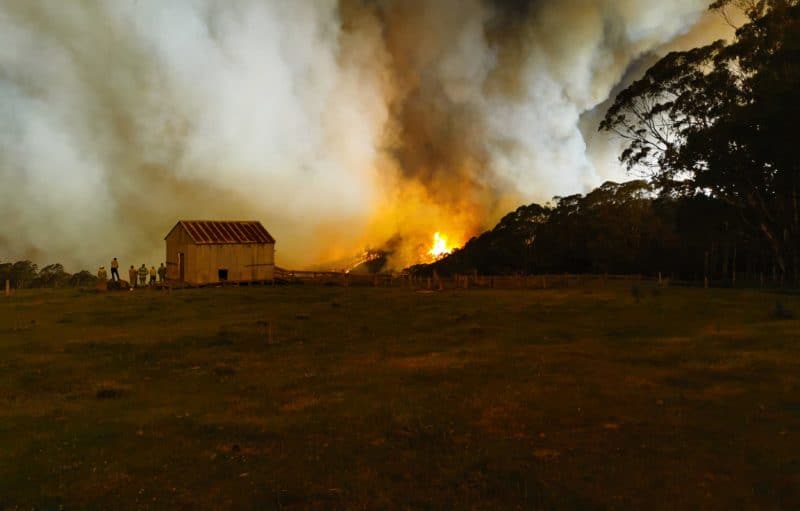Fire is one of the most contentious and difficult land management issues in Victoria.
It can bring the protection of nature into conflict with public safety: the material that fuels bushfires is also a complex web of life.
This apparent conflict is often seen as a reason for ‘trade-offs’ in management, or a reason to ‘sacrifice’ nature. But it doesn’t have to be that way.
Fire in the past
Over millennia, our native plants and animals have evolved in the presence of fire. Most plants can handle occasional fire, and some actually benefit from fire. But frequent fire can be a real problem for our plants and animals.
First Nations communities used fire to promote different plants for food, and to attract animals they wanted to hunt. They would burn different areas at different times and frequencies, always with a specific purpose. Today, some communities use fire techniques based on traditional knowledge, but the appropriate extent and pattern of burning remains a topic of discussion.
Fire management today
The Secretary of the Department of Energy, Environment and Climate Action (DEECA) carries out work to prevent and suppress bushfires. Victoria’s Forests Act (1958) requires DEECA to do this across state forests, national parks and protected public land.
How fire interacts with our native bush is increasingly complicated by a number of factors:
• Climate change and disruption brings more frequent and severe fire weather.
• The repsonse of introduced pest species: deer populations can thrive on new green growth after fire, and weeds like cape broom respond well to fire.
• Great pressure on our land managers to reduce the impact of fire, largely through unprecedented levels of fuel reduction burning.
Fire and biodiversity
Fire management is difficult, and public safety will always be a priority. Having said that, we need to be clear about the limited effectiveness of fuel-reduction burns.
Infrastructure of one sort or another occupies most of Victoria. It’s often surrounded by grassland or bushland. But we have to work out what mix of management programs best achieves the two main objectives of fire management: protecting lives and looking after our natural living web.
What can be done to protect nature and help public safety?
Studies by fire-behaviour specialists show fuel-reduction burning is limited on days of catastrophic weather. On days when the public fire danger is at its highest, planned burns work best close to the settlements. They are less effective further afield, away from build structures.
There are many important ways to increase public safety, without compromising our natural heritage. They include:
• An increase in rapid attack capability*
• An increase in surveillance of fire bugs
• Stronger planning regulations to avoid new house-building in fire-prone areas
• Incentives (e.g. interest-free loans for approved household bushfire bunkers)
• Compulsory evacuation from fire zones, unless a householder has an approved fire shelter
• Local power generation, to avoid fires caused by faulty power lines
• Improved community education.
*Aerial preparedness is expensive, but compared to the cost of damage from a severe fire, it’s a good investment. Victoria is already good at this, but there’s room for improvement
What is a tolerable fire interval?
Fire ecologists have identified the ‘tolerable fire intervals’ for most Victorian habitats.
The ‘minimum tolerable fire interval’ is the time between fires that for a habitat to continue to be healthy. Such as the number of years required before re-grown plants are old enough to set seed. The ‘maximum tolerable fire interval’ is the number of years before a forest type gets old and starts to decay or senesce, i.e. it needs to be ‘renewed’ by fire before this time.
This system is still contentious. It’s based on known fire responses of some plants only, and does not include impacts on animals and birds, for example. However, it’s generally assumed that keeping a broad range of landscape ages between the minimum and maximum tolerable intervals, for each habitat, is the best way to go.
Every year DEECA is required to report on the impacts on nature of its fuel-reduction burn program. Recent reports show DEECA has failed to meet its objective of protecting biodiversity.
About half of Victoria’s native bush is below the minimum tolerable fire interval. Much of that area is still subject to management burns.
Presentation from Dr Philip Zylstra, Adjunct Associate Professor, Curtin University
Zylstra’s research has focused on efforts to build a basis for fire management that has sound scientific foundations and applications. We hope his modelling and analyses of climate-vegetation-fire feedbacks provides guidance in our new climatic reality.
